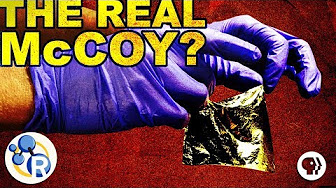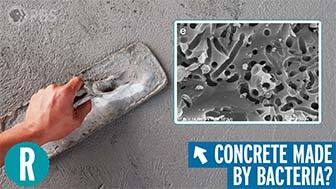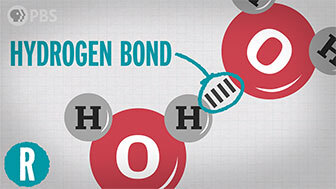This beautiful, color-changing tea is all over TikTok and Instagram. This week Sam and George add different things (some not drinkable!) to the tea to play with its spectacular colors.
Important note: One way to figure out whether all of the chalcone molecules were destroyed by bleach would be to add acid to the tea—to make sure we couldn’t change it from clear back to blue—BUT adding acid to bleach is dangerous, so... we didn't do it. Another option would be to use very expensive lab equipment to figure out the structures of whatever molecules are in the bleach/tea mixture. We don’t have a lab, so we'll stick with our chemical intuition on this one.
- Sources:
- Butterfly Pea (Clitoria ternatea), a Cyclotide-Bearing Plant With Applications in Agriculture and Medicine
- Anthocyanin Pigments: Importance, Sample Preparation and Extraction
- Modification and Stabilization of Anthocyanins
- A Commercial Potential Blue Pea (Clitoria ternatea L.) Flower Extract Incorporated Beverage Having Functional Properties
- Acute effect of Clitoria ternatea flower beverage on glycemic response and antioxidant capacity in healthy subjects: a randomized crossover trial
- Inhibitory effect of Clitoria ternatea flower petal extract on fructose-induced protein glycation and oxidation-dependent damages to albumin in vitro
- The Colour Degradation of Anthocyanin-Rich Extract From Butterfly Pea (Clitoria Ternatea L.) Petal in Various Solvents at pH 7
- Butterfly Pea (Clitoria Ternatea) Extract as a Green Analytical Tool for Selective Colorimetric Detection of Bisulphate (HSO 4-) Ion in Aqueous Medium
- Butterfly Pea Flower
- Towards Green Titration: Batchwise Titration With Reusable Solid Sorbed Indicators
- Anthocyanins: naturally occurring fruit pigments with functional properties
- Anthocyanidins and anthocyanins: colored pigments as food, pharmaceutical ingredients, and the potential health benefits
- State of the arts of anthocyanins: antioxidant activity, sources, bioavailability and therapeutic effect on human health









